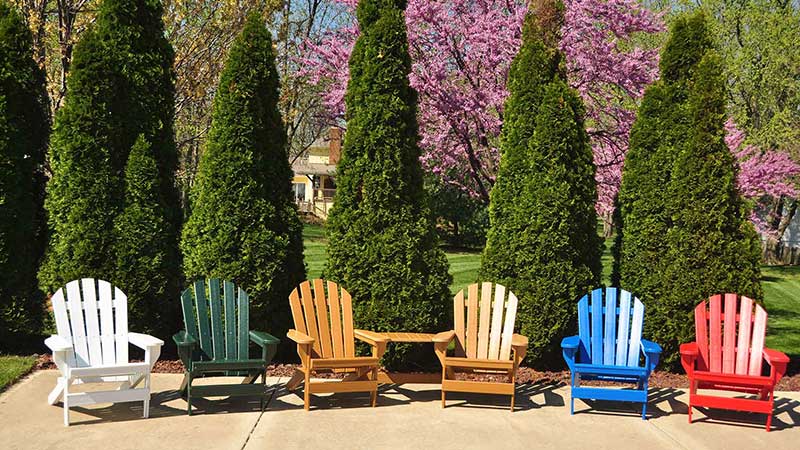- Mon-Fri 9am-4pm EST
- 888-663-4621

The Adirondack Mountains that lie in northeastern New York are famous for many things. They boast pristine rivers and lakes, numerous hiking trails and a boundless nature preserve. However, one of the most well-known things associated with the name Adirondack is not a river or a hiking trail, but something that originates from the region, the Adirondack Chair.
Originally called the Westport Chair, the Adirondack Chair was invented by a man by the name of Thomas Lee in 1900. Lee was from Massachusetts, but he spent his summers in Westport, NY, nestled in the Adirondack Mountains. It was in Westport that Lee decided to create a chair. He wanted it to be one that could withstand the harsh mountain conditions. He also invented the chair so that it would keep its balance on small hills or uneven surfaces. And thus, the Westport Chair was born.
Lee gave his invention to a local carpenter named Harry Burnell. Because Burnell was short of work, Lee offered to let Burnell create and sell his design for the Westport Chair. The chairs were immediately popular. Burnell noticed how successful the design was, and after narrowing the chair some, he filed for a patent in 1904. For the next 20 years, Burnell ran a successful business making Westport Chairs. Love for the chairs spread into modern times. Highly durable and comfortable, the Westport Chair evolved into today’s Adirondack Chair.
The original Westport Chair was designed with wide arms, a high backrest, and a straight slanted seat. It was cut from a single piece of seamless wood. The Adirondack Chair features the same wide arms, high back, and slanted seat. However, the Adirondack Chair is made from multiple slats of wood and the seat is more curved. This new design sped up the production and allowed Adirondack Chairs to become even more widely available.
Today, Adirondack Chairs are made in a variety of materials. Wood, aluminum, and plastic are some of the types of chairs available. When choosing which material to purchase there are several factors to consider:
Wooden Adirondack Chairs require the most maintenance. It is recommended to repaint or finish the chairs every 3-5 years and to wash them at least every year. Wooden Adirondack Chairs will also last longer when stored during the winter.
Plastic chairs require less maintenance. They are easy to keep clean and do not need to be stored in the winter. They typically weigh less than the wooden chairs. However, the plastic chairs are not as sturdy as their wooden counterparts.
Plastic or wood, the Adirondack Chair is the perfect seat for front porches or campsites. It is durable enough for commercial settings and comfortable enough that it will be the most sought-after seat at the family picnic. It's hard to go wrong with an Adirondack Chair.
You must login to post comments.